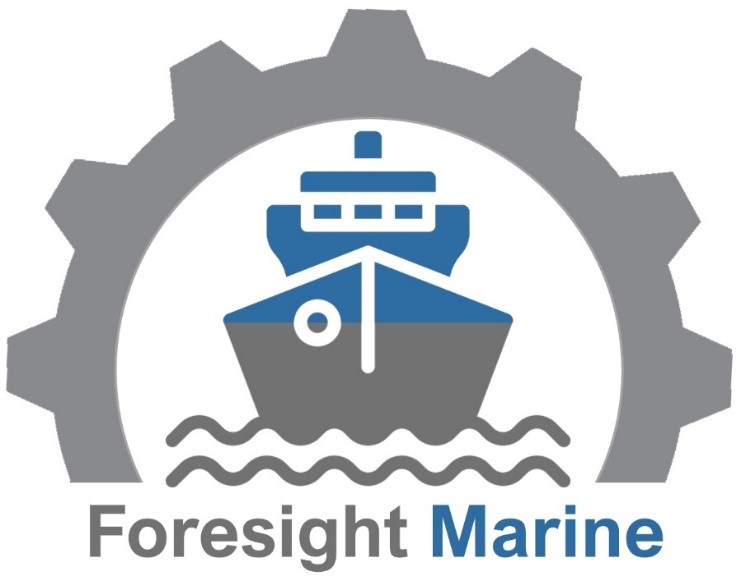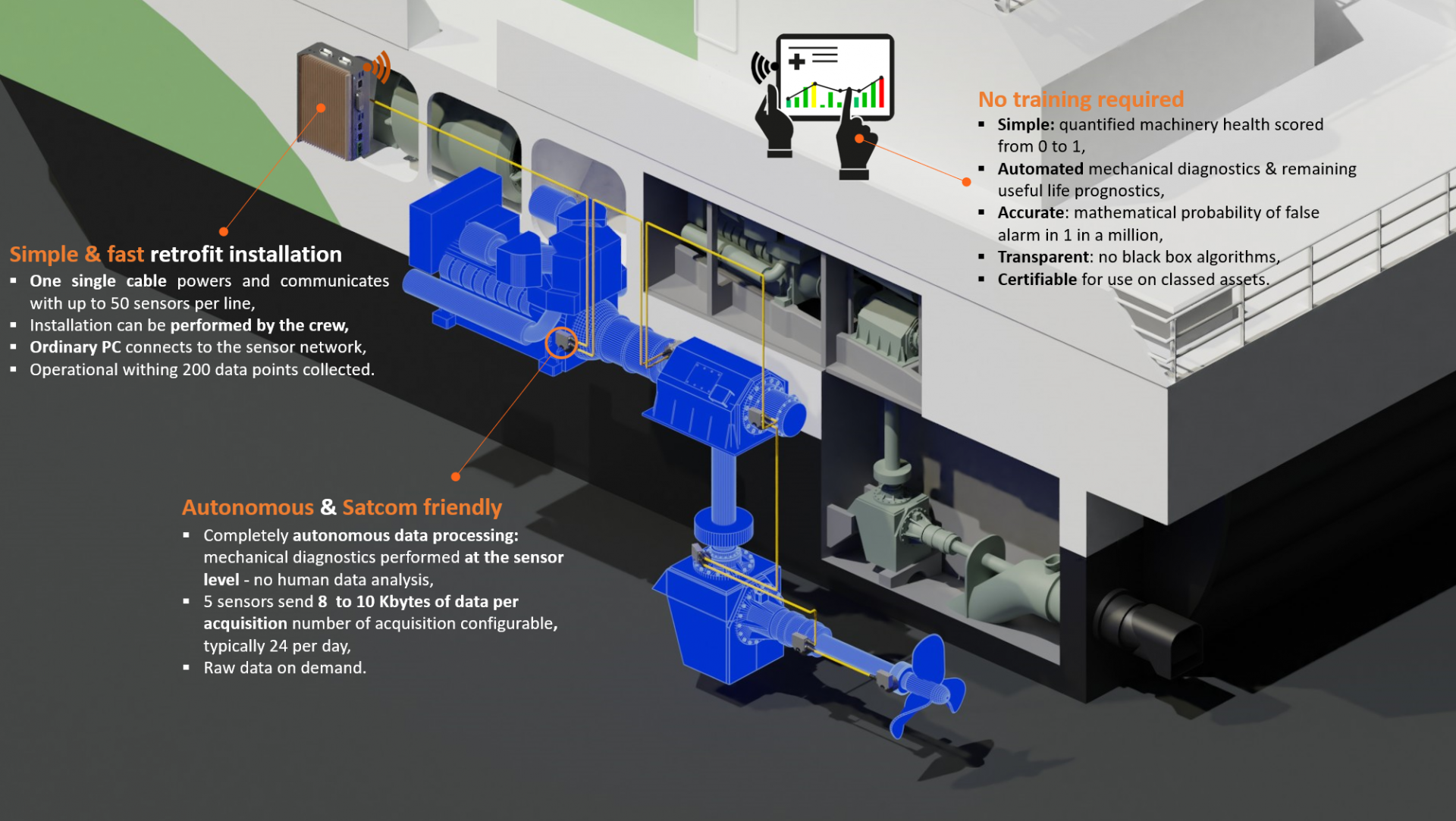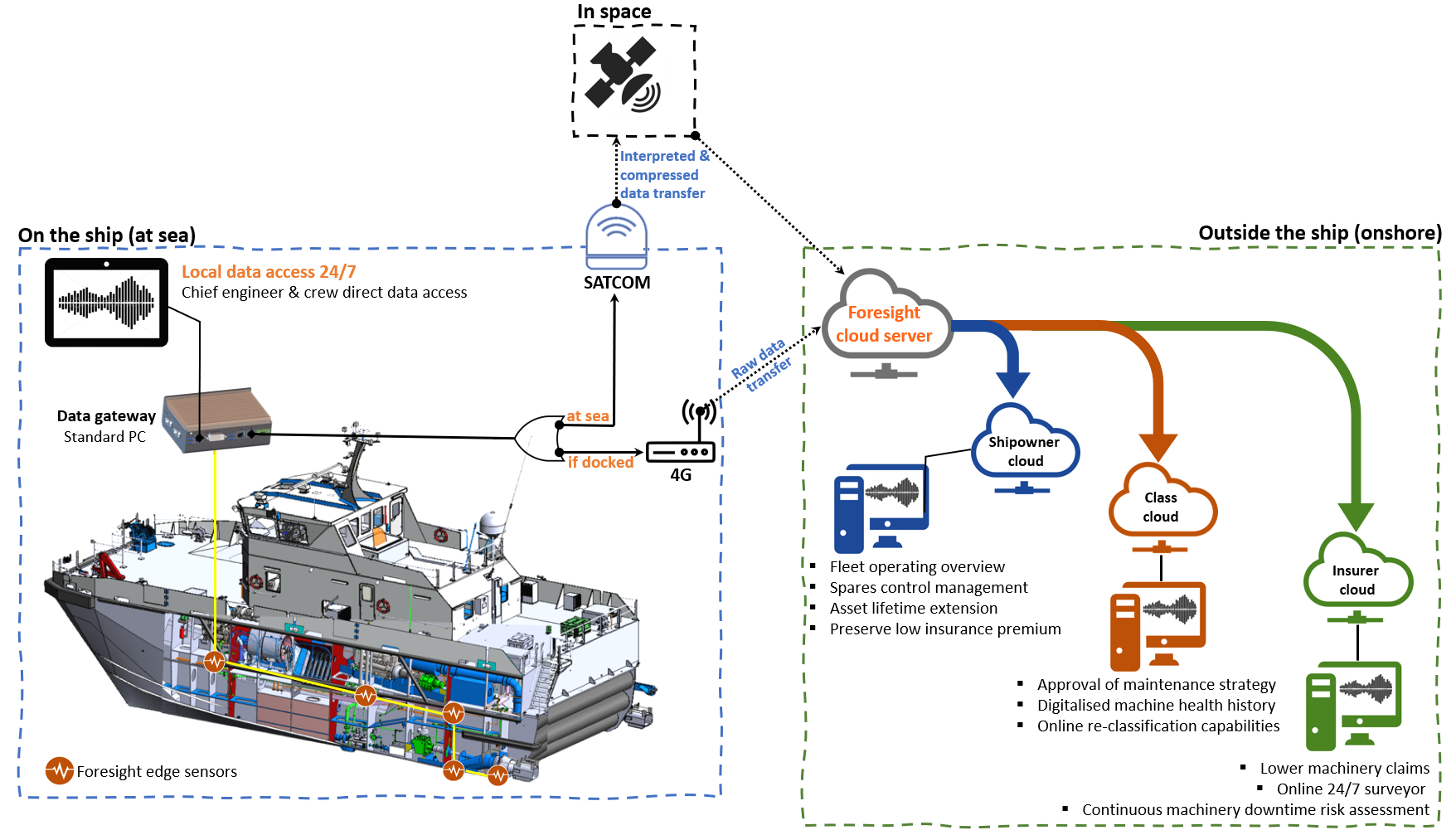
Objectives of the service

Machine Prognostics AS (MP) is a Norwegian company engineering machine monitoring systems for the maritime industry. Algorithms originally developed to monitor life-critical aerospace components are re-implemented in our product called "Foresight Marine". This cross-innovation dramatically increases MP commercial potential in the marine sector by introducing disruptive, yet trustable aerospace-certified algorithms in our sensors.
In this feasibility ESA project, we are investigating the viability of a circular business model where the digitalised machinery health data generated by Foresight are shared among shipowners (e.g. Maersk) marine certification societies (e.g. DNV-GL) and marine insurance companies (e.g. Gard) thereby digitalised the interaction between this maritime stakeholder enabling the following services:
- digital class, reducing ship machinery re-certification labour efforts while increasing safety;
- digitally computed machinery insurance premiums, more cost-competitive than the norm;
- prevent the replacement of functional machinery parts significantly beneficiating the environment.
Users and their needs
Maintenance processes used on ships today aim to avoid downtime by upholding machinery in "quasi brand-new state" maintaining assets according to a pre-defined schedule regardless of their condition. Today 98% of ships and offshore platforms rely on a scheduled, Time-Based Maintenance (TBM) strategy. However, TBM strategy does not take into consideration that usage and operational environment have a bigger impact than time on machinery. Statistically, 89% of yearly machinery faults are not time-related, and 69% of them involve recently replaced parts . TBM strategy has significant flaws, such as:
- considerable crew time dedicated to machinery inspections,
- unnecessary maintenance on working machines,
- unnecessary purchase and storage of spare parts,
- unexpected downtime caused by recently replaced parts.
Conservative maintenance regimes engender: (a) exceptional direct costs, yet, shipowners follow TBM strategy to maintain the warranty on the equipment as well as maintain class and insurance coverage in case of machinery breakdown; (b) exceptional indirect environmental footprint.
The Maritime industry demands a machinery monitoring system that can provide:
- quantified return of investment from day one,
- cost-efficient reliable real-time machine monitoring,
- agnostic to machinery brands,
- minimising connectivity to shore,
- removing the need for manual data analysis.
Service/ system concept
The proposed service is to enable a SaaS (Software as a Service) business model type by selling data to shipowners, marine certification societies, marine insurance companies and other interested parties, while not charging for the hardware (free of charge) nor the system installation as it can be installed by the crew.
This ESA feasibility study focus on COGS – can the hardware be made cost-effective enough to be given away? Reliability – can the hardware survive the maritime environment? customers – are shipowners willing to share their data? and finally Regulatory, can class societies approve the use of Foresight data to digitally class a ship?

Space Added Value
There is no business cascade potential if the Foresight system is not able to communicate, in quasi real time, to shore. Without a Satcom link to shore, Foresight system becomes an in-situ machinery condition monitoring system with a relevance limited to the crew onboard the ship. History shows that in-situ machinery condition monitoring systems have a weak business case as shipowners perceive them as extra Hull & Machinery insurance. The monitoring technology might avoid downtime in a distant future; however, the actual return of investment is unclear for a shipowner.
To really mainstream the deployment of machinery condition monitoring systems in the maritime industry, the data collected must bring quantified return of investment from day one. With Foresight, the core added value of the system is based on continuously sharing data with stakeholder (class, insurance, vessel constructor, etc) via a satellite connection.
Current Status
The current feasibility study validated the interest of shipowners in the technology and business model (Sensor/Software as a Service coupled with a circular data-driven economy) elaborated during the project and highlighted the timing sensitivity for introducing new technologies in the marine market.
Recent discussions with shipowners highlighted that condition-based maintenance is still of interest; however, most shipowners' top priority is to recuperate the losses accumulated during the COVID period. A direct consequence of the re-prioritisation strategy is the sales cycle time which has significantly increased when dealing with the introduction of new technologies. It is expected that digitalisation of maintenance inspection will surge again in 2022.



